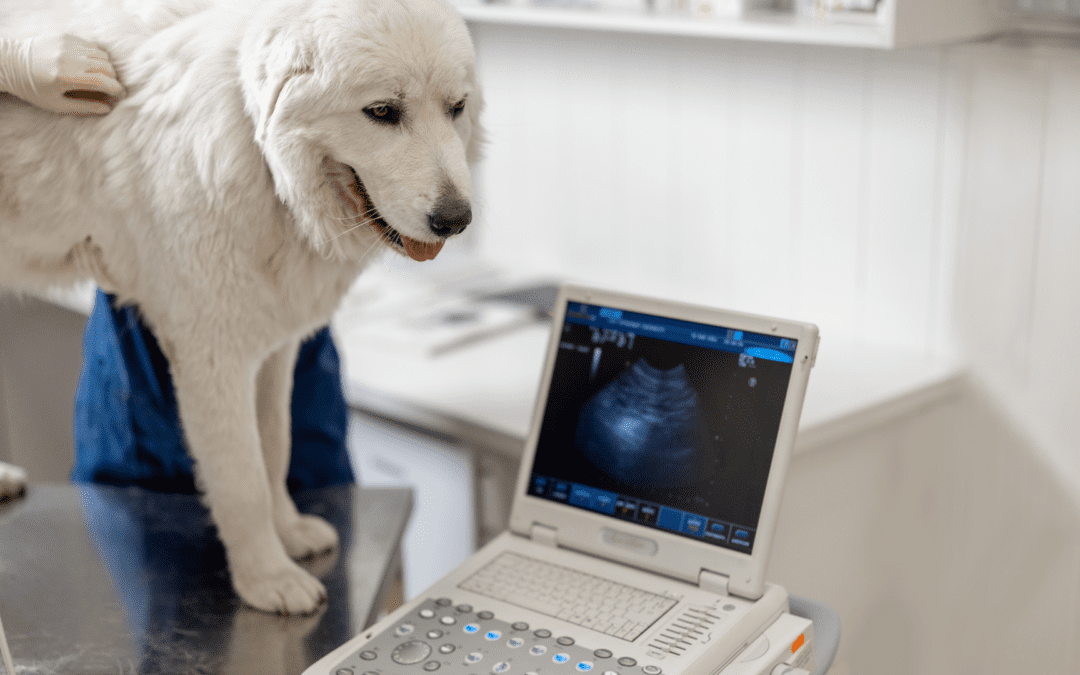Have you ever wondered what is means when your pet is getting, or has been recommended to receive, an abdominal ultrasound?
When evaluating and diagnosing for diseases, we often perform imaging in conjunction with a physical examination and other testing (blood work, urine analysis, infectious disease testing, fluid or tissue analysis, etc.). A good first line of imaging we have available to us are radiographs. Radiographs continue to be an important tool and are preferred when evaluating for thoracic (chest) and skeletal diseases. With abdominal disease, radiographs can detect basic organ size and shape, gall bladder or urinary bladder stones (mineralized objects). They can also be helpful when screening for intestinal blockages or foreign bodies (we’ve seen it all! – remote controls, toys, jewelry, etc.). There are even more forms of imaging that include magnetic resonance imaging (MRI), computed tomography (CT), and endoscopy.
But what exactly is an ultrasound? It is a high frequency sound wave that is emitted from a transducer probe which then encounters different types of tissues, fluids, or organs. Those sound waves are reflected and then used by a computer to create a real-time image.
Why do we choose ultrasound for certain evaluations?
- Ultrasound allows for more thorough examination of internal organs, including the liver, gall bladder, stomach, pancreas, spleen, adrenal glands, kidneys, urinary bladder, and reproductive organs. This comprehensive evaluation aids in identifying a wide range of conditions.
- Ultrasound can be used to guide minimally invasive procedures, such as fluid aspiration or tissue biopsies.
- Because the images are immediate, this enables prompt recognition of abnormalities and initiation of treatment, which is particularly crucial in emergency situations.
- Ultrasound can be used for serial monitoring of disease progression with chronic conditions or other situations where continuous evaluation is helpful.
- Ultrasound is non-invasive and most pets are comfortable, experiencing minimal stress during the procedure. Sedation is sometimes needed for an exam and sometimes additional procedures such as tissue sampling (biopsy).
All problem-solving in veterinary medicine starts with the basics: signalment (age, breed, sex), history, primary concerns/symptoms, and a physical exam. Sometimes this is enough to make a presumptive diagnosis, but other times more information is needed to work through a medical problem. Testing can both rule out possible conditions and lend support for disease processes that would explain ongoing symptoms. When it comes to imaging, each type has unique advantages (and disadvantages) in disease detection. I hope this blog helps explain why we may recommend an abdominal ultrasound for your pet. Please let us know if you have any questions!
Take care,
Dr. Sharon Nath

